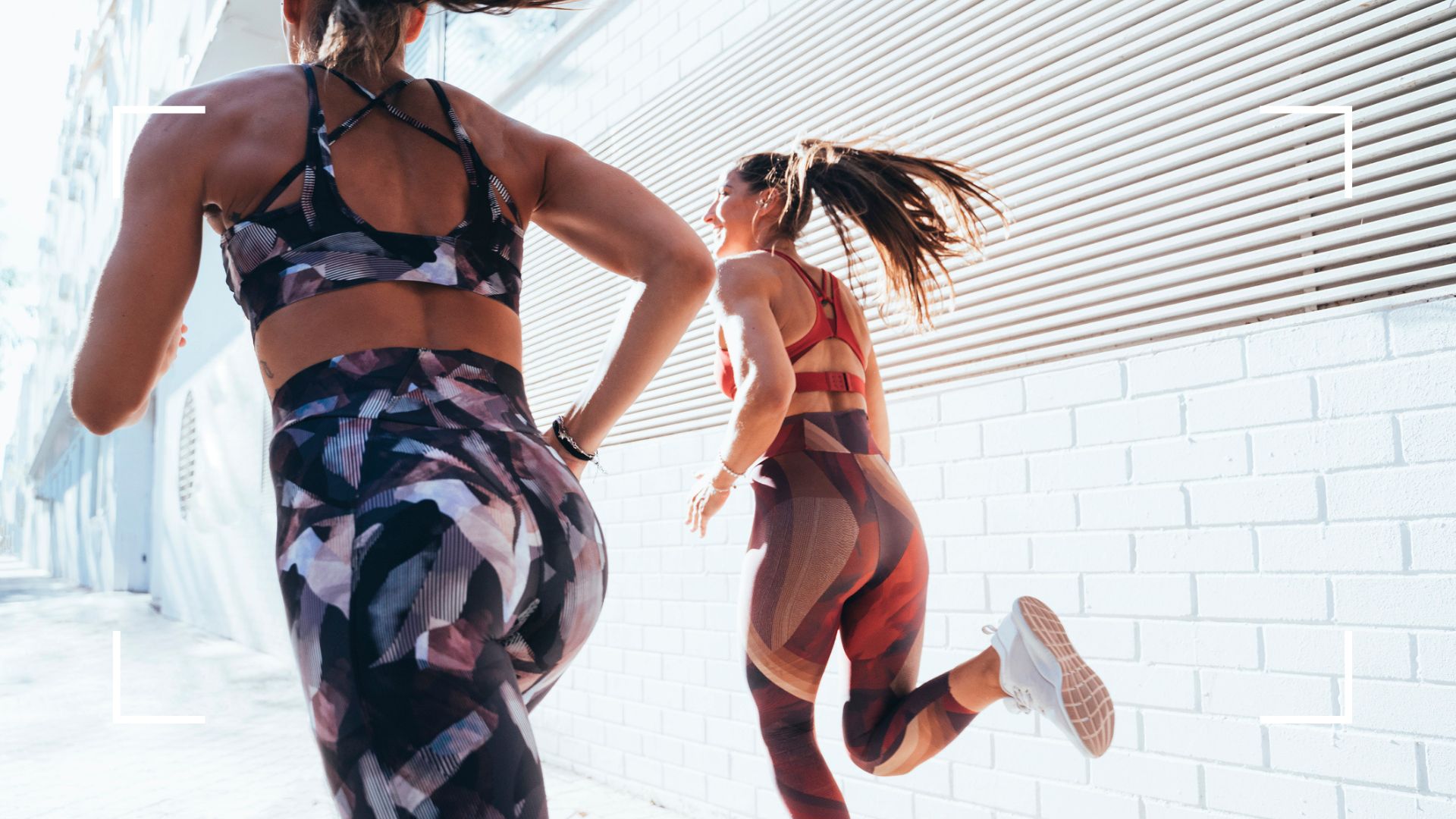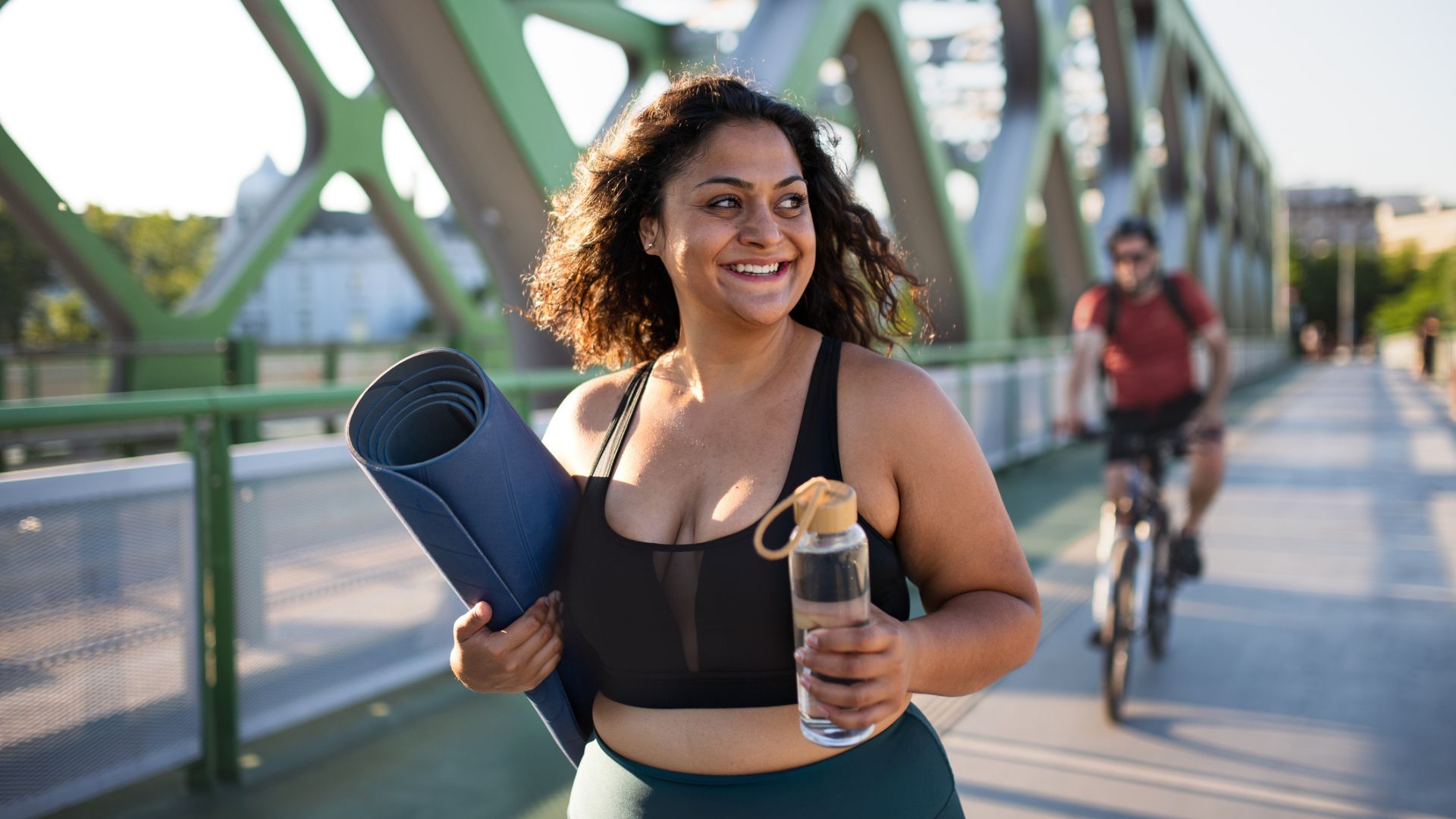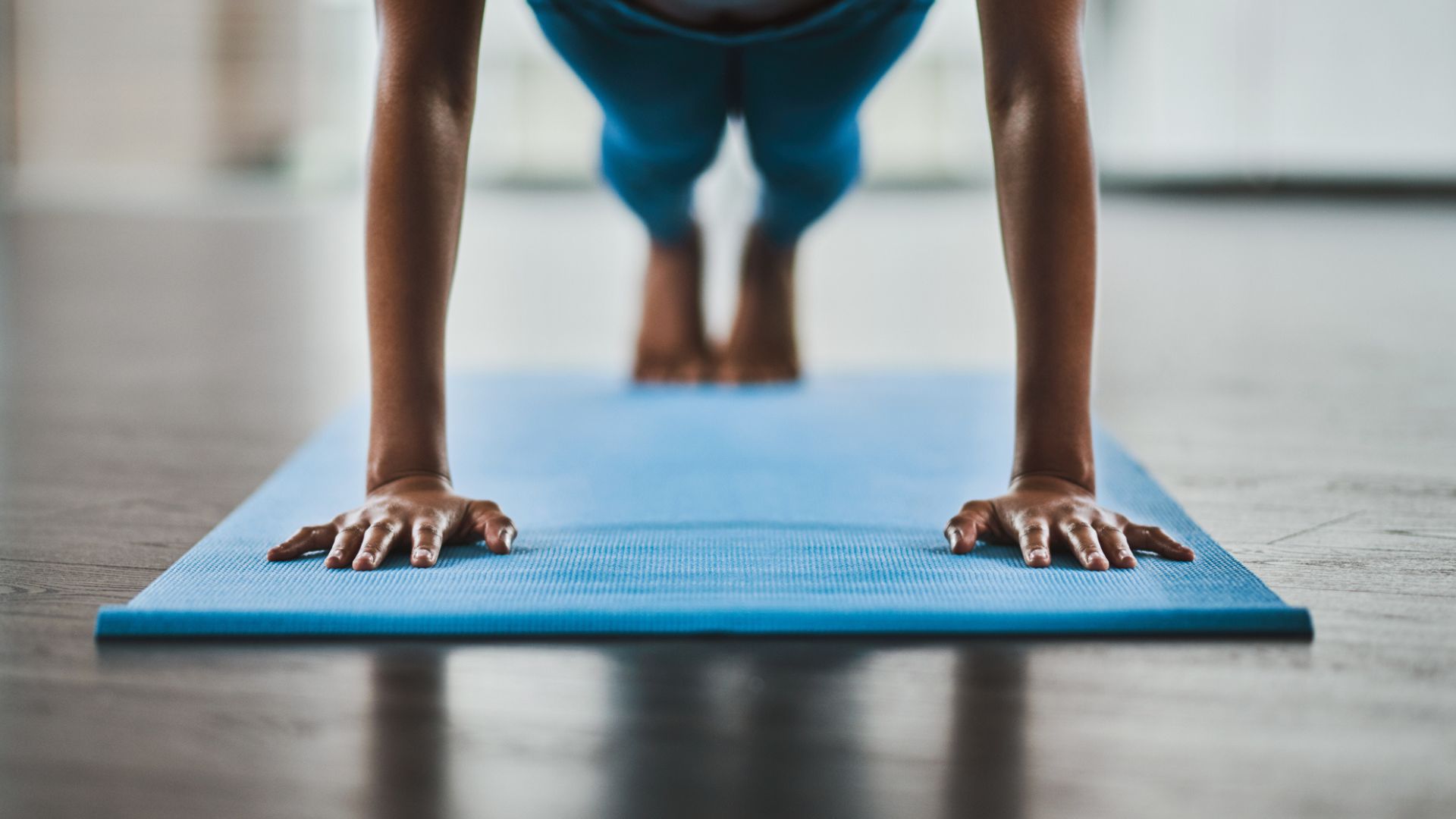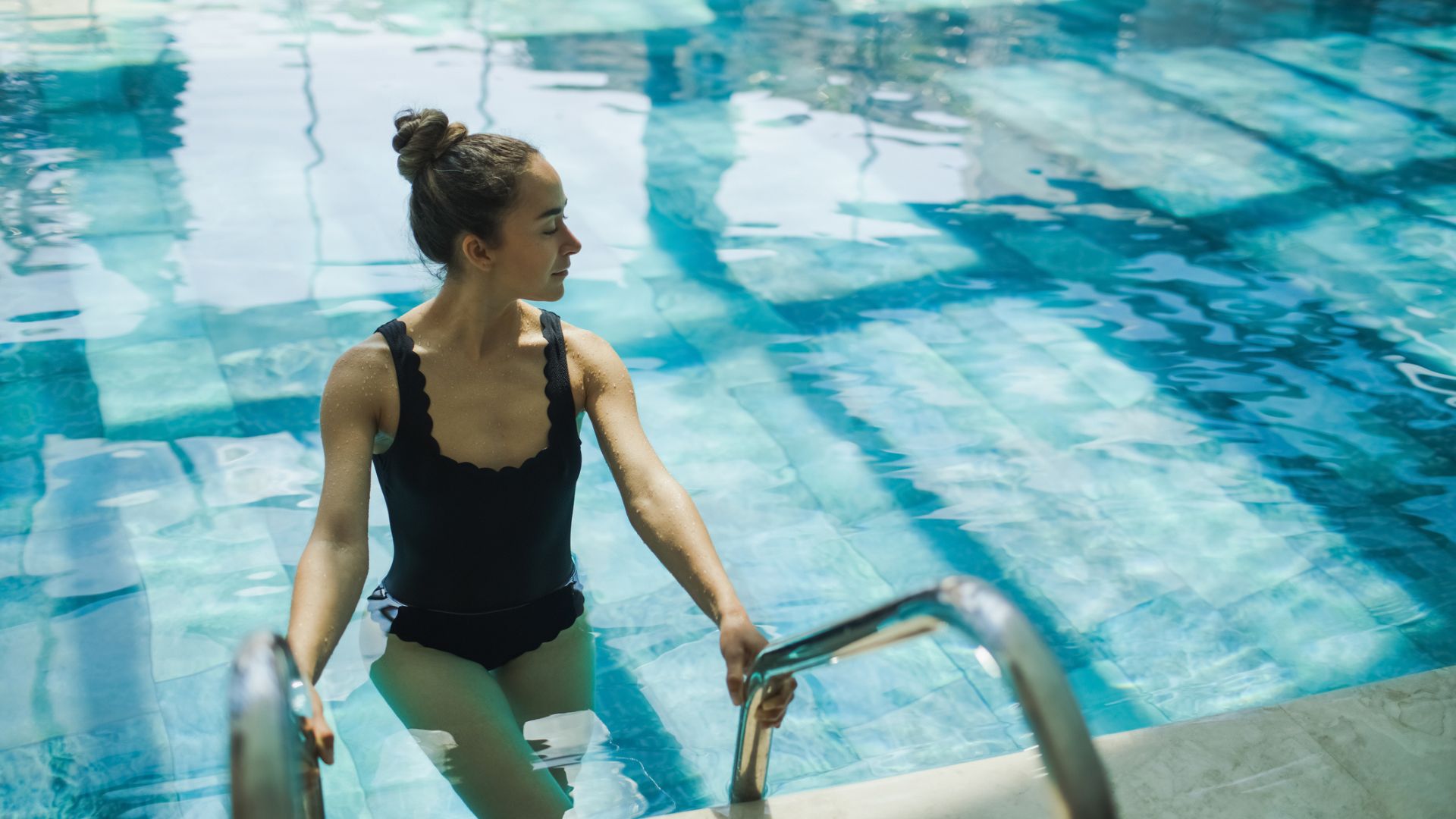Try these 9 easy cardio exercises that personal trainers love
If you're after some easy cardio exercises to help you get fit, then you're in the right place...


If the thought of a HIIT workout or 5k run makes you swiftly break out in a sweat, then focusing on easy cardio exercises can be a more accessible - but still very effective - way to improve your fitness levels. Indeed, it is possible to raise your heart rate, and reap the consequent multiple benefits to your health, without stressing your body out.
We've called on top personal trainers to share their favorite low-impact forms of cardio exercise - from walking to dancing and swimming - as well as some of their go-to cardio-based moves to incorporate into your current workout routine. Because, as you'll learn, it's important to not neglect other aspects of fitness too, such as strength and mobility training.
As well as revealing the positives of cardio, whether running is good for you, and how often should you do cardio, our PTs will also bring you up to speed on the downsides of high-impact workouts - including why focusing on LISS cardio is particularly helpful as you age - and share their expert tips for getting started if you're a beginner. Don't forget, whichever type of training you opt for, you want to feel comfortable, and that will probably involve investing in a pair of the best running shoes. Now, let's get a move on...
What are easy cardio exercises?
First things first, let's get to the bottom of what this type of movement actually involves. "Cardio is an abbreviation of ‘cardiovascular’ and it relates to any aerobic training that stimulates your heart rate," says Nancy Best, personal trainer and founder of Ladies Who Crunch. "There are lots of different types of cardio training - from intense conditioning workouts, think sprint training, through to low impact ‘steady state’ (LISS) movement, like a gentle cycle or a swim."
What's more, it's a very important part of any fitness routine. "Building your cardiovascular fitness is an important element of overall heart health, as it improves your capacity to pump blood around your body," explains Best. "As you increase the volume of cardio in your training routine, you will notice a gradual lowering of your resting heart rate, which has been linked to optimum long-term health."
Cardio can particularly help if healthy, sustainable weight loss is your goal. "Simply put, it raises your heart rate and makes you breathe more heavily, helping to put you in the ideal state for burning energy, both fat and calories," explains personal trainer Rachael Sacerdoti, a personal trainer and founder of It's So Simple. "It can also help improve the quality of your sleep and increase bone density - particularly if you are incorporating strength training too." Both of which are invaluable if you're looking to tone up.
Similarly, it is great for your mind too. "Cardiovascular training also increases the oxygen supply to the body via our arteries - this can aid in combatting the decline of brain function as we age," points out Haylene Ryan-Causer, personal trainer and founder of The Energy Studio at Volonté. "Additionally, it can improve your self-esteem by releasing 'happy' hormones such as serotonin and dopamine."
Sign up to our free daily email for the latest royal and entertainment news, interesting opinion, expert advice on styling and beauty trends, and no-nonsense guides to the health and wellness questions you want answered.
However, not all forms of cardio are equal when it comes to their impact on your body. "While high-impact workouts are brilliant for boosting endorphins, they can take a toll on our joints and can restrict functional mobility," notes Best. "It's a misconception that only these intense workouts can get 'results' - because without the right balance of muscle mass, flexibility and core strength, you’re not protecting your body for the long haul." Additionally, research by the University of North Carolina found that high-intensity exercise increases levels of the 'stress' hormone cortisol, which can trigger everything from weight gain to low sex drive and anxiety symptoms.
So, what's a better approach? "Lower impact cardio is a hugely beneficial way to get your heart rate into a ‘working’ zone, without putting your body through too much stress," recommends Best. "Steady state cardio can be really mindful - whether that’s hiking or going on the cross trainer - and continuous repetitive movements that work multiple muscle groups will give you all the mental health benefits of more intense conditioning, without risking impact injuries."

1. Walking
This is the simplest and most accessible form of cardio out there. "Taking a brisk walk in nature is brilliant for both your mental and physical wellbeing," says Sacerdoti. Indeed, you can also mix it up by trying forest bathing - which involves surrounding yourself in trees and other greenery - for boosted immunity and lower stress levels.
But while lacing up your best hiking boots and heading into the outdoors is an ideal way to harness the health benefits of walking, it is not the only way to get your steps in. "People often forget that walking doesn’t have to be high impact and can be sociable too - like a meet up with a friend for an on-the-go coffee," recommends personal trainer Chelsea Labadini.
But make sure to challenge yourself too - even if it's aiming to reach that age-old target of 10,000 steps per day. "Try and do more than the week before within the same time frame," suggests Labadini. "You could even change your route to one with hills or that is longer - the options are endless." One of the best fitness trackers can help you gauge how hard you're actually working.
2. Plank walk-outs
There are also certain exercises you can incorporate into your existing gym routine, that will get your heart rate up but still go easy on your joints. "Plank walkouts with shoulder taps are a great way to also target the core, shoulders and hamstrings," says Best. You'll need a comfy surface for this one - these versatile best yoga mats should do the trick.
"Stand at the back of your mat. Hinging from the hip, bring your hands to your feet on the floor and walk your palms forward, keeping your legs as straight as possible. When you get to a plank, tap alternate hand to shoulder four times, and then pike your hips to bring your hands back to your feet. Stand and squeeze your glutes, keeping your tailbone tucked and core engaged - and then repeat." Watch how to master the move here:
A post shared by Nancy Best (@ladieswhocrunch_)
A photo posted by on
3. Stair-climbing
Another easy way to incorporate more easy cardio exercises into your daily life - particularly if you are short on time - is to use what you have at home. "We all usually have some stairs," points out Ryan-Causer. "Instead of going up and down just when you need to, do a few rounds after you wake up in the morning and time yourself each time - this will show you your progress since you'll gradually climb faster from week to week." If you're at work, try to walk up a few flights - rather than take the escalator or elevator - where possible.
But back to at-home fitness - try adding in some movement in between meetings or childcare. "Exercises such as bear crawls, mountain climbers and spider mans also increase your cardiovascular ability as well as your range of movement," says Ryan-Causer. If you're using one of the best workout apps, then you can always modify some of the exercises to make them gentler. "Perhaps switching burpees for caterpillar walkouts, and squat jumps for kneeling-to-standing," she adds.
4. Squat swing
This exercise is another low-impact way to get your heart rate up, and it targets the glutes, quads and core - which is great if you're after some effective ab workouts. "Stand with your feet just wider than hip-width apart," explains Best. "Sit in a deep squat, keeping your arms straight and hanging by your sides. Try to touch your fingers on the floor.
"Now exhale and sweep your arms overhead as you stand up, so you finish upright with your arms extended above you. Squeeze your glutes and pull your navel inwards, towards your spine - and then repeat." Watch how to master the in the video above.

5. Weight-based cardio
While cardio has many benefits, it's also important to add in some strength training at the same time if you can - and you can even combine the two. "No only does weight-bearing cardio - like a dumbbell squat press or lateral raise - slow down bone loss, but it also stimulates bone growth," reveals Sacerdoti. According to research by the Chonnam National University Medical School in South Korea, resistance exercises like this can help ward off conditions such as osteoporosis.
But it's not just our bone health that needs our attention, particularly if you are starting to experience perimenopause symptoms. "Muscle mass changes for all of us as we get older, so exercise that helps to rebuild or maintain muscle is a must as we age," adds Sacerdoti. "Muscles, their corresponding tendons, and ligaments all support our joints and so training with weights - even if it is just your own body weight - is something I highly recommend." If you are starting out, then the best resistance bands are a great way to begin toning up.
6. Rowing
Cardio at the gym doesn't need to be about pounding your knees on the treadmill. Labadini points out that going on the rowing machine is one of the best forms of easy cardio exercises. "It works your upper body as well as your legs," she explains.
However, it's always good to mix things up. "Try a 30-minute cardio workout comprising of 10 minutes walking on the treadmill, 10 minutes on the rower and 10 minutes on the bike," suggests Labadini. "Keep a nice steady pace and aim to reach a further distance the following week. This is great because the variety of machines keep it interesting and challenge the body in different ways."
7. Dancing
Keeping things fun will help with workout motivation - making dancing an ideal option. "Head to a class and you'll be doing a cardio workout without realizing," says Labadini. "As you try and remember the dance steps you will forget that you are even exercising and sweating.
"Dancing will also trigger the release of happy hormones from the energy of the music and other people in the studio too. it can likewise help with coordination as well as mobility, improve your mood and keep your heart rate up." She recommends signing up for Zumba as a good starting point.
8. Cycling
"Cycling is a great way to practice cardiovascular fitness while experiencing the great outdoors," says David Wiener, training specialist at fitness app Freeletics. "It offers some fantastic health benefits including weight loss, building muscle, limiting the risk of heart disease, and improving your mental wellbeing.
"When you cycle, you are enduring a less weight-bearing exercise due to the fact you are sitting down, so it is very low impact. This makes it very kind to your joints whilst still improving overall function in your lower body, working your leg muscles without feeling too overwhelmed and strained."
9. Swimming
"One of the benefits of swimming is that it is a great exercise for beginners looking for a full-body workout without feeling too sore afterwards," recommends Wiener. "Much to people's surprise, it actually makes your body work harder than it does on land but it still feels low impact.
"The soft resistance water provides makes it suitable for beginners looking to get fit, being gentle on the joints whilst also improving cardiovascular fitness and strength. It can also be built up the more your fitness levels increase, so you can start swimming for longer and faster - or even try water aerobics."

Cardio for beginners - 3 expert tips
1. Start off slow
"The word cardio is perceived in so many different ways, with some people thinking they need to participate in intense HIIT sessions to be doing it - this is not the case at all," explains Wiener. "It is any kind of rhythmic exercise which raises your heart rate into the cardio zone - meaning a simple daily 30-minute walk. As long as you’re hitting your target heart rate zone, you are participating in cardio, and therefore burning fat and calories.
"If you want to get into exercise, don’t rush into the most intense cardio you can think of - you’re just going to not want to carry on. Try walking every day to get into the swing of things and focus on building up your fitness levels. In this way, you will find your love for fitness again while reaping all the amazing mental and physical health benefits."
2. At-home workouts
"Similarly, it's a misconception that you need to go to the gym to do cardio - which can be extremely daunting," notes Wiener. "However, working out at home can be just as beneficial, if not more so.
"It is a great way to increase your cardio fitness without feeling like everyone is watching you. All you need is some workout space, comfortable clothes and a positive attitude." Indeed, as you get your heart rate up it is likely you'll benefit from some support from one of the best high-impact sports bras.
3. Make it social
"With a lot of activities, whether it’s going shopping or out to a restaurant, you’re more inclined to do it when you know you’re meeting loved ones, rather than going on your own," points out Wiener. "The same goes with exercising, if you’re a beginner, make plans to exercise with someone you enjoy spending time with.
"If they’re at the same fitness level as you, you can both learn together and encourage each other to keep on going and push harder. You can even bring a little bit of competition into it, which again will push you both harder. On the other hand, if they are already into fitness, then they can help teach you along the way and help you find your love of fitness again."

Lauren is a freelance writer and editor with a decade of print and digital journalism experience. While she specialises in covering health and wellness topics - ranging from nutrition and fitness, to women’s health conditions and mental wellbeing - she has written across a diverse range of lifestyle topics, including fashion, beauty, homes, royals and travel.
In addition to writing for Woman & Home and sister title Homes & Gardens, Lauren's work has also been published by Women’s Health, The Times, Daily Telegraph, Elle, Cosmopolitan, The Guardian, Marie Claire, Body + Soul, Stylist, Glamour, Grazia, Red, Dazed Digital, Yahoo Life, The Sun’s Fabulous, Get The Gloss and Hello! among others.